The end of February 2020 marks the 6th anniversary of the blog, and exploring London. When I started in 2014 I really did not expect to manage a weekly post for 6 years.
The original aim of the blog was to track down the locations of my father’s photos and to provide an incentive to get out and explore London. It is so easy when travelling around London to take the direct routes between work, home, station etc. and not see how much history is both obvious and hidden across the streets.
This original aim still holds true, and does result in what may seem to be a random series of posts, but hopefully does reflect how much there is to discover across London.
I am also always looking out for ways to take a different view of the city – tomorrow’s main weekly post will be an example. It was inspired by an e-mail from a reader a couple of months ago, and a challenge to see how a subject that at first looked to have limited scope, could reveal a fascinating history of how Londoners lived over a century ago.
Writing at a computer is very much a one way process, and I do worry whether my posts are too long, tedious to read, focus on the right topics etc. In January I started the brilliant Clerkenwell and Islington Tour Guiding course, which will hopefully help with writing a more focused read on a specific topic, learning more about a fascinating area of London, as well as taking the blog from the screen to the streets at some point in the future.
Now for a quick look back over the year, starting in:
March 2019 – The Perseverance or Sun Pub, Lamb’s Conduit Street
When one of the posts covered the Perseverance or Sun Pub, Lamb’s Conduit Street, this was the view of the pub in 1985
So many London pubs have disappeared in the last few decades. The land they occupy frequently more valuable as apartments rather than as a pub. Although the pub has a new name (the Perseverance), it is thankfully still there, although with not such a colourful mural on the typical Victorian pub curved corner.
April 2019 – Walking the South Bank in 1980 and 2019
In April I was back on the South Bank, an area I have visited a number of times over the last 6 years. It is also the perfect site to demonstrate how an area has changed over the years. I started work on the South Bank in 1979, and took photos of the area, which I can add to my father’s photo, and later photos. The following sequence show how the view from the southern end of Hungerford Bridge has changed over the years. This is 1949:
1980:
2019:
A significant change over the past 70 years.
May 2019 – A City Relic In Deepest Hampshire
The City of London has lost so many churches over the years and the contents of these churches could have been destroyed, sold, moved to another church in the City, or perhaps a longer distance move.
One such church is Holy Trinity, Minories, which closed at the end of the 19th century, and today there is no trace of the church, however a key item from the church furniture can be found in a very different place, which I visited in May.
This is All Saints’ Church in the village of East Meon in Hampshire.
And the original pulpit from Holy Trinity, Minories can be seen in the village church:
Including a plaque which confirms the original location of the pulpit, and how it arrived in this Hampshire village.
Strange to see this relic from a City church in a very different location.
June 2019 – St Katharine’s Way and Ship Fires on the Thames
Hopefully I do not make many mistakes, but luckily when I do, the knowledge is out there and readers are able to correct. In June I posted the following photo in a blog about Thomas More Street. The photo had been labelled with this name by my father, so I assumed this was the street, despite some doubts when trying to match the curve in the photo with Thomas More Street.
Luckily readers were able to identify the correct location as St Katharine’s Way, so I was able to return and write an updated post with the right location.
The aim of the blog is to identify the locations of these original photos, so it is brilliant to identify the right place where I have made an error, or there is insufficient information in the photo to identify the location.
July 2019 – Seven St Martin’s Place and London Hotel Growth
In July, I wrote about a former office building at the southern end of Charing Cross Road that was being converted to a hotel. This is Seven St Martin’s Place.
It was interesting to research the considerable growth in hotel capacity across the city, and how this demand is expected to continue to grow.
The front of the building had a number of sculptures by Hubert Dalwood, a very well-respected sculptor in the Modern British movement. When a building undergoes conversion there is always a worry that wonderful original features such as these works could be lost, and there was no mention in the planning documentation of the works, or the requirement to preserve them.
I walked by the building a few days ago, the new hotel is now open, and the sculptures are in the same place and in good condition, so hopefully they will remain there for many years to come.
August 2019 – Southend on Sea – A London Bank Holiday
In August I followed so many thousands of Londoners from previous years and took a trip out to Southend.
Southend is a bit quieter than 1910, when the following newspaper extract introduced a Bank Holiday day at the town:
Very early in the morning the incoming excursion trains began to unload their human cargoes; the railway stations, like gigantic hearts, beat at regular intervals and sent the human tides flowing outwards, to disperse themselves along the various arteries and veins of the town.
Southend Pier, so typical of a Victorian seaside and which marches well over a mile into the Thames Estuary, and the train still carries those who do not want to walk:
Numerous fires have destroyed the buildings at both ends of the pier, but the train is still one of the major attractions on the pier.
September 2019 – Crow Stone, London Stone and an Estuary Airport
Although not in London, this post was my favourite of the year. It involved some careful plan of tides, and an early morning start to get to the London Stone near Yantlet Creek on the Isle of Grain by 6:45 in the morning.
The London Stone is an example of how the City of London extended their authority over much larger areas than just the City, including the most important transport route at the time – the river that carried all cargoes to and from London docks.
It was a brilliant experience standing there at low tide, with the sweep of the Thames Estuary as the day started to brighten.
St Giles Cripplegate and Red Cross Street Fire Station
September also had another fascinating event when I had on display some of my father’s post war photos of the area now covered by the Barbican in the church of St Giles Cripplegate, as part of the Barbican@50 event.
It was brilliant to meet a number of readers and Barbican residents at the event.
St Giles Cripplegate and Red Cross Street Fire Station were the subject of one of my father’s photos:
Impossible to get a photo of the same view today, as the Barbican now surrounds the church and the fire station was demolished as part of the Barbican construction, the following photo is the closest that I could get.
October 2019 – Baltic Street School and Great Arthur House, Golden Lane Estate
I was in the same area for a post in October with another of my father’s photos, this time showing the area now occupied by the Golden Lane Estate. During Open House London weekend I had visited Great Arthur House on the estate. I was busy on the Saturday when the weather was brilliant, and on Sunday, the sky had clouded over and rain showers added to the gloom, but the view of, and from Great Arthur House was fascinating.
The view from the roof of Great Arthur House during a break in the rain.
November 2019 – The View from Greenwich Park – Watching the City Evolve
There are some places in London that provide an ideal reference point to watch how the city changes. One of these places is Greenwich Park from where there is a superb view over the Isle of Dogs and along the River Thames to the City of London.
With prints and photos I tracked the development of the city from 1676 to the present day, but the developments of the last few decades has been the most dramatic with the exponential growth in the number of gleaming tower blocks.
This was the view in 1953:
And a very different view in 2019:
A Remarkable Story of Bravery
November also included a rather special post.
The previous year, I visited the Netherlands to photograph the locations that my father photographed in 1952. This included the Oosterbeek war graves cemetery on the outskirts of Arnhem where those who died during Operation Market Garden are buried.
I was really pleased to be contacted by Paul Brooker, the nephew of Richard Bond, the name just visible at the bottom of the list of names in my father’s photo, and Paul kindly contributed a guest post detailing his research into Richard (Dick) Bond, and the crew and final flight of those named on the grave at the left of my father’s following photo.
It is a remarkable read.
December 2019 – Tintern Abbey – Summer 1947 and 2019
As well as London, my father photographed many sites across the rest of the country, including Tintern Abbey in South Wales in 1947.
On a very hot and sunny day in August of last year, I visited the site, and wrote about the visit in December, hopefully also as a reminder of a summer day, when writing in the depths of winter.
Tintern Abbey is next to the River Wye, one of the main reasons for the abbey location, and the scenic position of the abbey today. Hopefully with all the flooding of recent week’s the abbey, businesses and homes along this stretch of the river have survived without any damage.
Tintern Abbey in 1947:
And in 2019:
January 2020 – The Waterman’s Arms – Isle of Dogs
January 2020 included a 1986 view from outside the Cutty Sark pub in Greenwich across to the Waterman’s Arms on the Isle of Dogs.
In 2019, the view is now somewhat obscured, however the pub is still there, and hopefully after a rather patchy recent history, will soon be returning as a traditional pub, with the original name of the Waterman’s Arms. The pub briefly shone on the national stage in the 1960s when Daniel Farson put on entertainment that would normally be expected in the West End than the tip of the Isle of Dogs.
February 2020 – The Dome at Islington Green
Coming up to date, and in February I visited Islington Green to track down the location of a 1985 photo with a unique structure facing the street.
This was originally the Electric Theatre which opened in February 1909. The statue on top of the dome dates from the time of the cinema, and the domed structure formed the entrance foyer.
The 2020 photo sums up two changes that can be seen across the majority of London streets, the take over by chain shops, and the ever-present CCTV.
In working on the blog, and looking at my father’s photos and also the photos I have taken since the late 1970s, I am constantly thinking about what is a good photo. I do not mean in terms of composition, getting the exposure right etc. but what does a photo do – how does a photo provide the viewer with information, how does a photo evoke a specific moment in time, or a specific place.
I have a number of themes I always photograph when walking London’s streets. Hairdressers (possibly strange, but they are a constant on the streets and they do show how fashions change), pubs (before they disappear), the changing view from specific view points (Greenwich, St Paul’s Cathedral etc.).
I have recently added a new theme – newspaper stands.
This was outside Charing Cross Station, and the headline on a newspaper perfect;y captures a specific moment in time.
So that was my 6th year. For me it has been a fascinating year of exploration, but sitting here typing to a screen would be a rather pointless exercise without anyone to read it – so thank you for reading, commenting, subscribing and e-mailing.
Now for the 7th year, and tomorrow’s post will be a bit long (sorry) but hopefully an interesting exploration of a city street, bringing to life the Londoners who lived on the street over one hundred years ago.





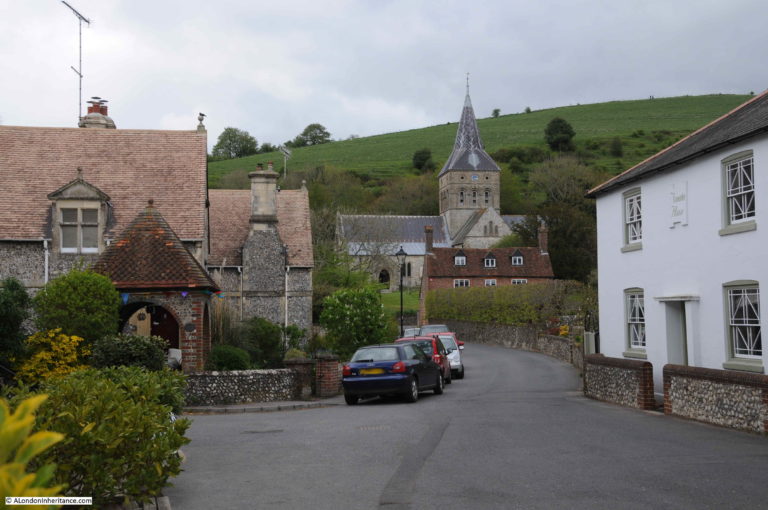







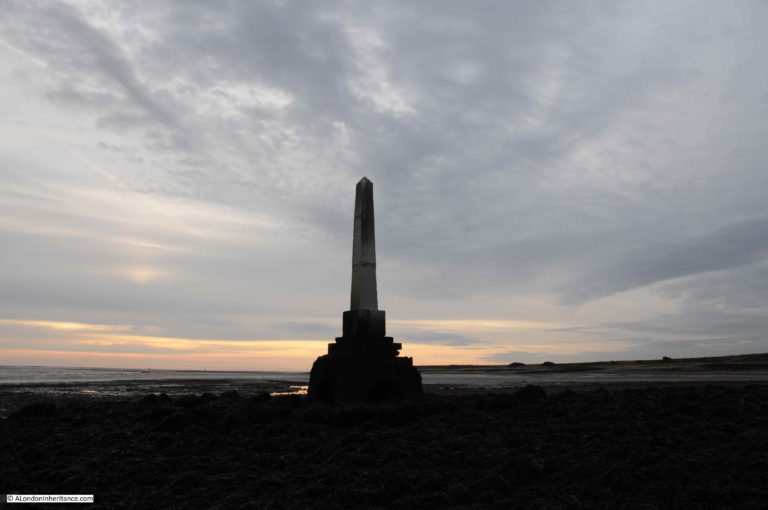

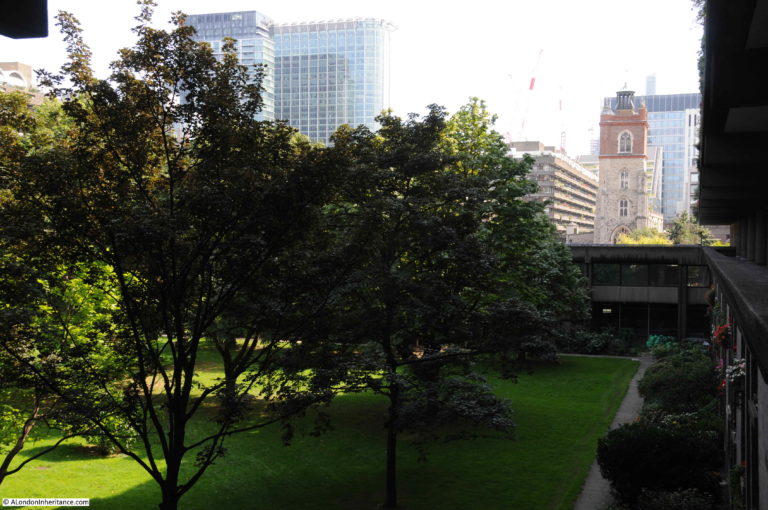
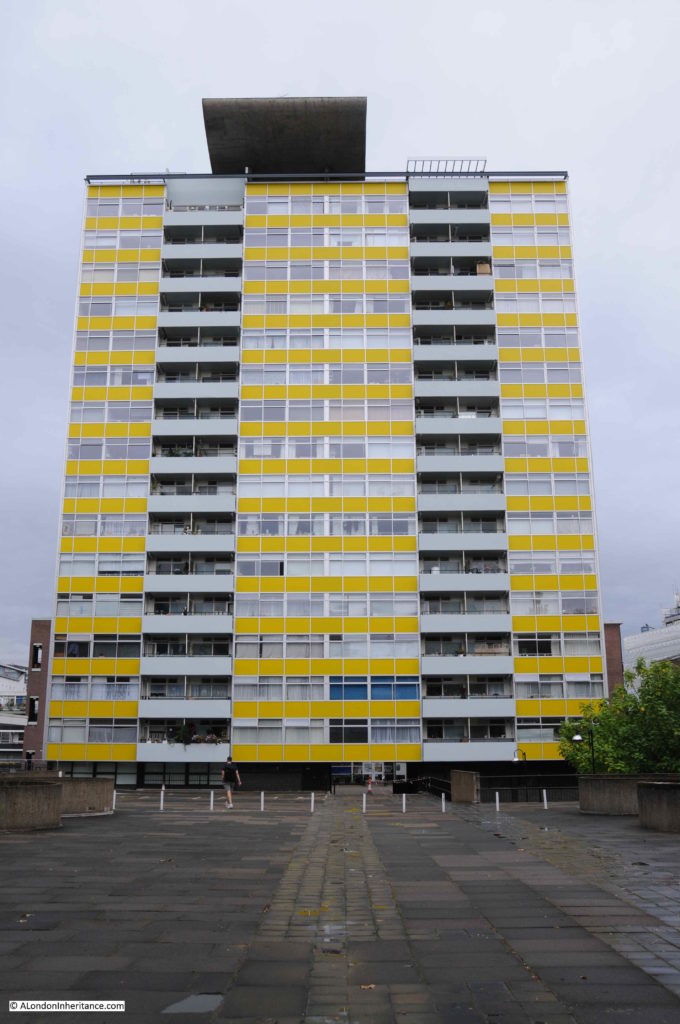





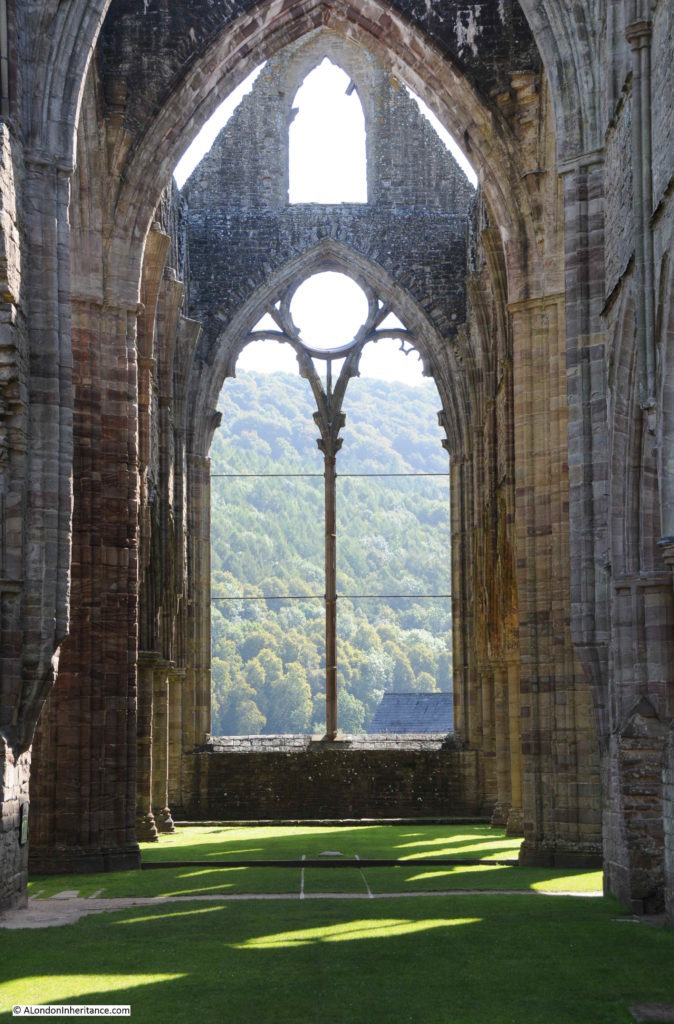
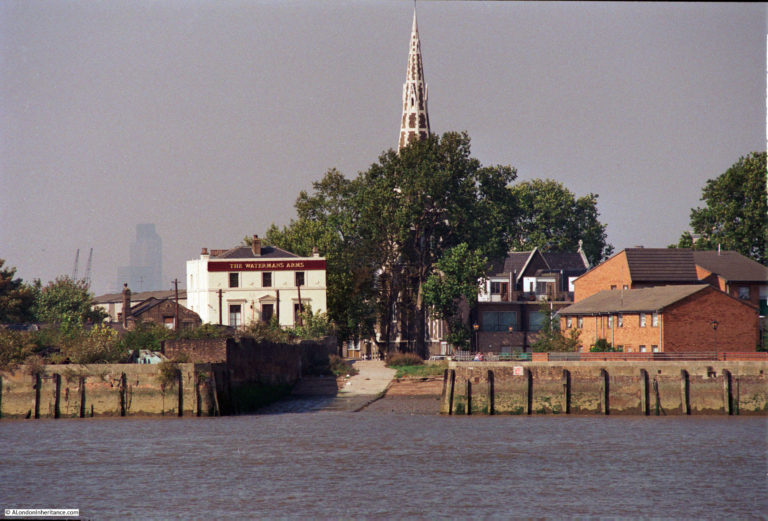
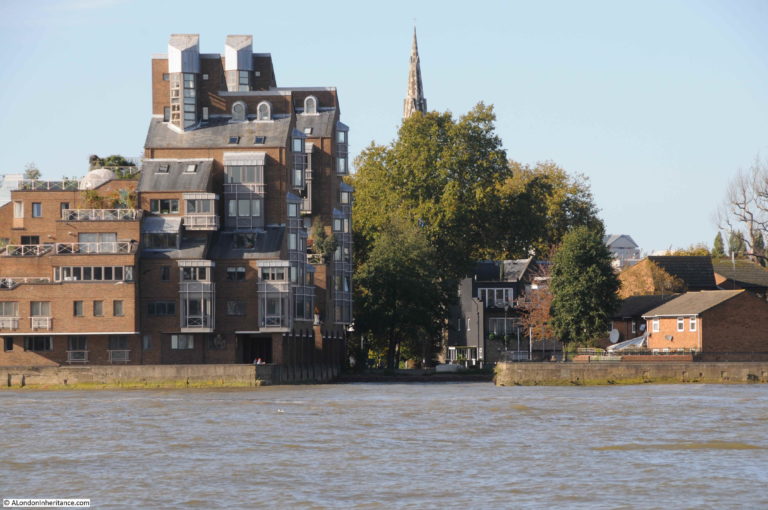
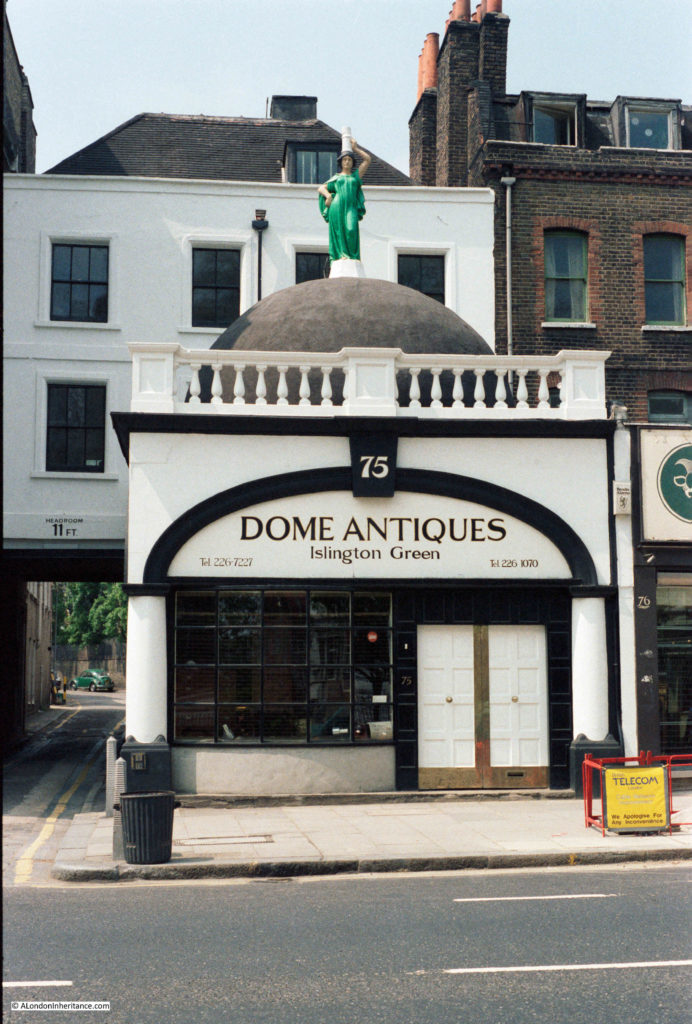


Please keep these coming as they are always a worthwhile read. I always enjoy them especially those areas of which I have knowledge, the City and east end. In my lunch hours I used to have a very brisk walk from Bishopsgate up to Oxford St and Tottenhaman Court Road when it was the mecca of electronic and radio shops.
Congratulations David, what an interesting, entertaining and enlightening blog you’ve created!
I love seeing your posts coming in on Sunday morning. If you ever decide to put it all in a book I would buy the first edition!
Of the many emails (wanted and unwanted) I receive every week yours are easily the most welcome and interesting. So well researched, written and photographed. Please keep up the good work!
Just want to thank you for all the fascinating posts. I look forward to them every week. The very best example of the upside of the internet. I find them a great comforting read during these very unsettled times. A reminder that Londoners endured and survived the most horrible terrors.
I so appreciate your weekly blogs and they are never too long. The extraordinary amount of work you must put in to each one is phenomenal. I was born in London and like to think I know a lot about our city yet each week is a new revelation. The Crow Stone and the London Stone are magical. Congratulations on your six years of writing and good luck as you embark on the seventh; I am looking forward to your new discoveries.
Your blogs are endlessly fascinating, and I find them well written and never too long! Don’t change a thing.
Looking forward to the next six years…!
Please don’t worry about anything – I find your posts fascinating you write in a style that is very easy to read as it flows effortlessly.
I’m looking forward to another 6 years of good/interesting reads on Sunday mornings.
Thanks for all your efforts as it can’t be easy.
Keep the posts coming! Always fascinating and often encouraging me to get out and about to look at some of the places you blog about.
I can quite understand how much blogging is a one-way process for you – although hopefully the comments hep to give you some feedback. Why not add a quick ‘star’ rating at the end of each blog (not sure technically how!) to allow quick feedback to help you which are the most (and least) popular blogs?
Long may you continue i felt quite alarmed when i 1st started to read the blog i thought you were going to stop -great montage of pictures.
Congratulations on your anniversary – a well-deserved achievement! We met at the Barbican Fair a few months ago, and I was struck by the way in which your virtual community had become real.
Just keep on doing what you’re doing! This is a superb effort on detailing the history and changes in the great city of London. Congrats on your work so far, here’s wishing you many more years doing such.
I travel to London as often as events attract me to it, from my home in Birmingham. For example, 2 weeks ago I went to see three free exhibitions, in Old Street, Somerset House and Bermondsey. In different areas of the city, so I saw different types of streets, buildings, architectural styles, time spans, etc.
Anyway, I look forward to YOU enlightening me and many others with London delights, curiosities and history in the time to come.
I think your blog is excellent – and much appreciated. My main interest is the East End (family connections – I came upon your posts about Hardinge and Johnson Streets just about the time I visited Stepney in order to trace my ancestors’ houses) but all your posts are brilliant! Thank you, and keep it up!
Echoing comments above – I love reading your posts. So well researched, not only recaptyring the past but preserving some of the present too..
Always a fascinating read and I particularly enjoyed the Greenwich piece as I too have seen many changes in the 40 years I’ve lived there
I came across your blog your blog about a month ago, following on from spending a couple of days in the Old Street area, trying to get a feel for some of the places I had come across whilst exploring the history of my family in Victorian times. My great-grandmother had lived in Baltic Street, which is what led me to your post, and I was fascinated by your pictures of that area. By co-incidence, the next day I had actually had a coffee in the Cafe Nero in Islington, which your next post was about! I am now an avid reader of your blog, and have become immersed in the history of Clerkenwell, Islington, Holborn and St Luke’s, so I look forward to doing one of your tours in the future!
Definitely keep on blogging!
Keep on keeping on! I really look forward to opening your post on a Sunday morning. I was born, and grew up, in and around London. Although I have now lived the majority of my life in Hampshire, I still feel London is my home. Partly due to your posts I probably know more about London, than if I had remained in the city!
Keep up the good work. Always informative.
A sincere thank you for your efforts. Always a joy to read. More power to your elbow!
Your blog is terrific, always fascinating and inspiring. I took the Clerkenwell and Islington Guiding course last year and loved it – enjoy, and good luck!
Can I add my congratulations to those above – I always enjoy reading your blog and selfishly want it to continue for ever! I don’t think you need any help with your writing either. The thing I love is that I see photos of places I remember from the 70s when I arrived in London, and realise how much London has changed in that time. But as Tessa says, it is an extraordinary city of great endurance and character, often heroic, often exasperating, like a great juggernaut rolling through history.
Here’s to the next six years!
Thank you so much for your posts. it must seem at times from your lonely place in front of a screen that no one is reading, let me assure you that we are and that we all look forward to your email giving us more insight into our beautiful city. I am one of those people so far from our home town that is very missed, I look forward to my slice of home from you.
Just to say your blog is NOT too long, tedious to read and all the topics you focus on are always interesting. Always look forward to you blog – keep it up and hope the course goes well.
Fabulous blogs, always enjoyable.
As I am constantly moving around London on 2 wheels (primarily commuting from Primrose Hill to The City by scooter or bike) I pass by so many place you discuss and your blogs really bring things to life inparticular those strange little alley ways. Always nice to take a 1 minute detour to seek out one of your finds eg the pump at Jockey Fields.
I love your posts, long may they continue.
As someone exploring family history, this focuses on some areas they have lived in, prior to their dispersion from both world wars, and now the gentrification, which would have blown them away!
I love your posts, long may they continue.
As someone exploring family history, this focuses on some areas they have lived in, prior to their dispersion from both world wars, and now the gentrification, which would have blown them away!
Your posts are thoughtful and well-written, and the photos by you and your father are wonderful – don’t change a thing! I’ve spent most of my life studying English art, architecture, and history, and had the pleasure to live in Hampstead for three years recently. Now that I am back in the US, your blog keeps me tethered to the city I love. Thank you for sharing your knowledge with the public.
Just came across you blog recently …and just after Id been on one of the TFL Hidden London walks . I love your story . My dad was born in London in 1920 but he never took any photos of London and all we have is his stories of living around The Cut and then Islington….his mum and dad were in service in Notting Hill and then grandad became a police officer …one of the first “Sweeny ” . My mum was brought up in Islington and again no photos.
So keep it up …its fascinating …us Londoners are often overlooked these days
Thanks for your blogs, always enjoyable. I don’t think there is any “right” topic. You often post about places in London I’ve never been but your historical research brings history to life.
Enjoy your course, and all the best.
XX Caz
As an American who hopes to return to my favorite city one day, I look forward to your posts each week. I am a history fan and love reading about the evolution London has gone through. I’m particularly interested in Georgian and Regency London and wonder if there are many of the iconic places left. I know places like Almacks are long gone, but are the buildings still there? Perhaps you could do a post on this sometime? Please keep your wonderful blog going – I will definitely keep reading!!!!
Thank you so much for all your hard work in researching and writing your blogs every week for us. I find them all fascinating and educational and I’ve learned a lot more about my city because of you. So much of London has changed in the last 20 years since I last lived there, but your father’s and your photos, pre 1980s, conjure up the London I remember and which seems more real to me.
Also you introduce your readers to forgotten parts of London which otherwise would remain unnoticed by us. Your blogs on the alleys and steps leading down to the Thames and all their rich history as conduits for the river travellers are quite haunting, ! Once such bustling essential parts of the city network and now so deserted and peaceful.
Parabéns! Eu vivo no Brasil e sempre tive vontade de conhecer a Inglaterra. Seu blog me transporta para esses locais que ainda não pude visitar. Obrigada por isso!
May I add a “me too” to the list of appreciative comments – and I suspect this is just the tip of a readership iceberg!
Look forward to reading your posts every Sunday. My paternal family come from the east end of London from Early Victorian days to post WW1 when they moved out to Essex. My Maternal side from South London until after WW2.
Find your comparisons of photos and brief histories fascinating.
Enjoy receiving your extremely interesting blog every week and reading and sharing it. Congratulations on your anniversary and please continue!
I thoroughly enjoy your posts. I lived in London during 2017-18 and miss it everyday. Your stories and photos are such a pleasure and allow me to “visit” now that I’m back in Chicago.
Thank you!
I do hope you enjoy the Clerkenwell and Islington guiding course. I did it last year and had previously done the Camden and the City courses. It is great to get to know these places better and to swap stories with fellow guides. I always read your blogs with the greatest of pleasure – many thanks. Best wishes, Jane
Congratulations on your 6th anniversary and thank you for writing such interesting and informative blogs each week. As others have said, it is amazing how such a wonderful city can change so much in each decade and each blog is something to look forward.
Thank you sincerely for your excellent weekly emails. Something I really look forward to each week. Your writing and photographs prompts one to LOOK carefully and not just rush through an area. London has such a rich history and your walks bring it alive.
Thank you for all your interesting and amazing blogs. I look forward to the weekend to see what will be this week’s blog. They are never.too long, sometimes not.long enough. 2020 is going to be a strange year, perhaps one of many so keep.up.The good work
As a London lover who lives in Chicago, I just want to tell you how much I enjoy reading your entries and exploring the city with you. I try to come over at least once a year, but there is just too much ground to cover, so thank you for making me aware of the many sites, sights, and byways I might miss.
Ever since I started subscribing a few years ago I look forward to your well written articles with their accompanying excellent photos. Don’t worry about length, content etc. It’s all good and very enjoyable. i was born a Londoner but moved away 40 years ago. I still visit from time to time and like to read about places I know and those I don’t. Many thanks for these excellent emails. Please keep them coming.
You are providing such an interesting and unique archive, which I hope future generations will enjoy as much as I do today. Thank you and do hope you can keep going.
Congratulations! I enjoy reading your blog. I don’t think it is too long. You lay it out in an interesting way with plenty of photos. I hope you continue with your blog for many years!
Too long? Never!
I’m a Londoner born and bred who sort of self-exiled to Norfolk in the early 1980’s, and although I often have deep nostalgic longings to go back it’s for a London of 40 years ago that doesn’t really exist any more.(I used to love walking across the old Hungerford bridge!) Still, your blog fills an important space and reading it is part of my Sunday ritual. Long may it continue :~)
So delighted to have found you and am enjoying your work and blog very much. I would love to know more about the Islington and St Pancras areas from 1900 to WW2. Can you suggest books or previous blogs?
Also London Bridge and Bermondsey, in particular a road called Snowsfields. I wonder why it was called that?
Thank you!!
My guess is that a Mr Snow owned some fields there. Rocque’s 1746 map of London (https://www.locatinglondon.org/) shows the street as Snows Fields (two words). Adjoining the street are two open areas marked as Snow’s Fields (note the apostrophe).
Dear Malcolm
In case i never replied to thank you I am doing so now. I remember at the time the link didn’t work for the map you suggested. I could google it and will do so.
Thank you SO much for your help.
Love Bella x
I look forward to your wonderful posts every week. Thank you so much for them!
I also wanted to post a thank you for your excellent blog. I discovered it about a year ago and it has become something I really look forward to every Sunday morning. I’m now enjoying catching up on the whole of the last six years by occasionally picking a date at random and reading one of your older posts.
I’ve never lived in London but it’s somewhere I’ve spent a lot of time so my familiarity with the subject of your posts varies a lot. Sometimes I know exactly where you’re writing about, other times not at all. But all of them are fascinating. I am very jealous of you doing the tour guiding course as I’d be signing up for it too if I lived in London. I just wish they ran them near me as it’s something I’ve always wanted to do and am now starting to do walks but without any advice or guidance.
I also echo many of the comments, I too love your regular blogs on London . I am from the Midlands but visit our capital city at every opportunity to explore, as much on foot as possible, I love walking London and not only seeing but feeling its history, your blog has enhanced this experience tremendously, some of which I have visited and retraced purely on the information you have provided .. thank you, your work is valued immensely .
Your blogs are almost always not long enough! I really appreciate the work that you put into this project. My particular favourites are those posts covering the alleys,courts,stairs and steps. Thanks again.
excellent posts every week – one of the few messages I look forward to and really take the time to read carefully. Always fascinating and eye opening with wonderful pictures.
Congratulations on reaching your 6th anniversary. I absolutely adore your blog and look forward to reading it every week. It is so informative and interesting. I really like your prose style as well, very easy to read and almost conversational. I’ve no idea where you find the time and the energy to do all the walking and research, but I’m very thankful that you do!
Thank you so much for your regular Blog.
I enjoy discovering new topics, and reading the painstaking and accurate details of the matters I do know about.
Please keep them coming and, to echo one of your other followers, please let me know when you publish your long overdue book. I will be queuing for an autographed first edition.
I’ve enjoyed your posts. Many thanks for bringing the history of London to life.
I really appreciate allthe hard work and research that you put into your posts. You oviously love London .
I was born in Bethnal Green in the 1940’s and worked in the City until late 90’s and thought I knew all about London, but you come up with new and interesting discoveries every week.
So, thank you and please keep going.
Thank you for your obvious labor of love. My wife and I visit London from the US semi-annually and I enjoy using Google Street View to search out the places you present. They often give us new sights to check out.
I’ll add thanks to the many others who have done so here, and as I do each time I offer a comment on one of your pieces.
I’m American. I recently received a flash drive in the post from my brother, who just finished scanning ~ 2700 slides of photos that our father took between 1952 and 1983. Among these were many photos from London in the ’50’s and early ’60s on three occasions when he and my mother either lived for a year or spent holiday there. Paris, too, during that time.
In addition were many photos from the late ’70s when my father taught medieval history for several years in an Oxford summer programme. During those times he lodged in Oxford and also in London and what is today International Hall on Brunswick Square, adjacent to UCL.
Many of his photos of London and Paris were only vaguely labelled, and many of the locations obscure. Like you, I enjoyed matching the photos with the precise locations in London and Paris in which they were taken, and comparing what they looked like those many decades ago with their appearances today. My memories from living in London in the early ’90s, and recent years working there frequently and walking all around the city for days on end, and from visits to Paris, along with Google Earth, made this a fruitful and enjoyable pastime. With only one or two exceptions, I was able to pinpoint the locations of approximately 150 of these London/Paris photos.
It’s interesting to see what has and hasn’t changed in London (much more the former than the latter, which you’ve ably documented via your blog). It’s also interesting to see what a physically static place central Paris is; it really is a museum piece largely unaltered during the decades, though so much wealthier and scrubbed than it was in the wake of the war. In contrast, London has continued to evolve physically, while fortunately preventing the death of so many of its architectural gems in the postwar urban renewal craze. Ian Nairn is prominently responsible for this preservation via his activism in the late ’50s and through the ’60s.
Thanks again for making our lives richer and more interesting via your offerings. Your sharing of these posts is an act of great generosity.
Dear American Bill!
So interested to hear your story, both about London in the 1960s and Oxford in the late 70s!
I grew up in London in the 1960s but don’t have any photos of it before the massive changes it subsequently received.
I went up to Oxford in 1981 and although not much of the town and Colleges have changed very little it must be so nice to have those memories.
I have just begun writing my memoirs (extremely unlikely ever to be published) but if a particular place comes up as relevant to my story would you be prepared to share the odd photo of a particular place if you have one? I’ve just been on a British Library weekend autobiography course and am SO inspired!
Likewise Oxford. I’m hoping I may take the writing further so you never know. I would OF COURSE acknowledge you! I’ve been too academically trained to ever do otherwise! On the other hand I may just fizzle out, of course….!
Bit embarrassed asking but your collection sounds such a brilliant source. The blog doesn’t often go back to 1960 ish.
Very best wis
Hello Bella. I’ll be happy to share the photos. I don’t know Oxford well so I didn’t identify the locations of the photos there from the late ’70s. I do have some from around UCL, however, as well as Hampstead (Parliament Hill and Hampstead proper) in the late ’70s and some earlier ones from ’62 (around Central London and also in Swiss Cottage/South Hampstead where my parents lived near Belsize Road with my two older brothers for a year) and more from the ’50s when my parents traveled there while living in Paris. My father did his research at the old Public Record Office on Chancery Lane.
I have a gem of a photo of the roundabout adjacent to what is now the South Hampstead Overground line. It’s taken in 1962 from a petrol station that occupied the site where a block of new flats now sits. I walked right past this spot 2-1/2 years ago and had forgotten that my parents lived a mere two streets north of it. I was able to find it via Google Street View. Most of the surrounding buildings haven’t changed much over nearly 60 years.
Probably the best way for me to do this is to put the photos on Flickr. If you send me your email address I’ll let you know when I’m able to post them. I’m at WJPegues@yahoo.com.
I would love for someone to publish a book of then and now! I would definitely buy the book! I know much is published to the internet but too often links are broken or websites are no longer maintained and information is lost in the internet abyss. I’m also fascinated by the stories!!! Late year, I happened to find myself in NYC at the same bar several nights in a row. My husband was busy chatting with our friends and I managed to sit at the bar next to the same lady every night I was there. She was in her 70s and she starts out telling me about the bar we were in and how it use to be a bakery and the owner retired and moved away, sold the bakery to someone who turned it into a bar, bar went belly up and then it turned into a soup kitchen, to a library, to another bar, to a women’s quilting group, to a coffee shop to another bar (the one which I was in). She also told me customers use to sit out on patio at night but the noise was too loud and neighbors complained. the bar owners put barbwire on the patio door to keep people out after hours (the ‘keep out’ signs didn’t work). She agreed it was loud bc she lived behind the bar in an apartment and could hear the noise. She had been living in the same apartment since she was a young child(rent control is a real thing in NYC). Mind you were in Hells Kitchen and she is in her 70s…so the stories she told me were ABSOLUTELY AMAZING. I made a promise to myself when I retire in a few yr, I’m making a project to talk with people about their neighborhoods…either record audio/video or journal this stuff.
A further thought in addition to my comment above: I experience London largely physically, via the buildings, parks, river, and weather. When I lived and worked there as an expat in the early ’90s it was still a reserved and rather closed culture. The young people with whom I socialized were almost exclusively Irish, Aussie, and South African expats. While working there once again during the past several years, I’ve begun to experience the place via Londoners with whom I work. It’s splendid.
One part of your blog that I cherish is reading the comments of those who have recollections of growing up or working in a certain area long ago, and their reminiscences about the people and culture, both long gone. it’s bittersweet to read these but it adds a rich dimension to the blog for which I’m also grateful.
Thank you so much for putting your blog together and enlightening us on the London of the past. Each week brings a whole new perspective on a different part of the city and it’s amazing to think how much time you must spend on it. Well done on reaching this milestone and keep up the good work!
This blog is truly a joy to read. The bad thing for me is I didn’t find it sooner. I have so much material to read through…but I guess you can say the good thing is I don’t have to wait for Sunday because I have a lot to catch up on. I hope you continue this for a long time as well as consider publishing a book.